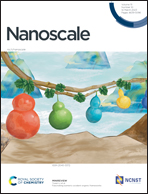Single-site bipyridine cobalt complexes covalently embedded into graphitic carbon nitride with excellent photocatalytic activity and selectivity towards CO2 reduction†
Abstract
A combination of a semiconductor-based photosensitizer with molecular catalysts via covalent bonds is an effective way to utilize solar energy to reduce CO2 into value-added chemicals with high efficiency and selectivity. In this study, 2,2′-bpy-5,5′-dialdehyde functioned as organic ligands and were embedded into the skeleton of g-CN through imine bonds via thermal copolymerization. The introduction of 2,2′-bpy can not only chelate with earth-abundant Co as single-site catalytic centers but also can optimize the properties of original g-CN such as the enlarged specific surface area and extended visible light absorption range. The CO evolution rate of g-CN-bpy-Co can reach up to 106.3 μmol g−1 h−1 with a selectivity of 97% over proton reduction, which was 82-fold than that of g-CN-Co. The different coordination environments and valence states of cobalt were also studied simultaneously and the results showed that Co(II) exhibited superior catalytic activity towards Co(III). Control experiments demonstrated that the covalent linkage between g-CN and Co-2,2′-bpy plays a vital role in photocatalytic activity and selectivity. Besides, the CO generation rate demonstrated linear growth upon visible light irradiation up to 72 h and preferable recyclability. This research provides a new facile way to fabricate low-priced photocatalysts with high activity and selectivity and bridge homogeneous and heterogeneous catalysis.

- This article is part of the themed collection: Celebrating 25 years of the Key Laboratory for Special Functional Materials at Henan University


 Please wait while we load your content...
Please wait while we load your content...